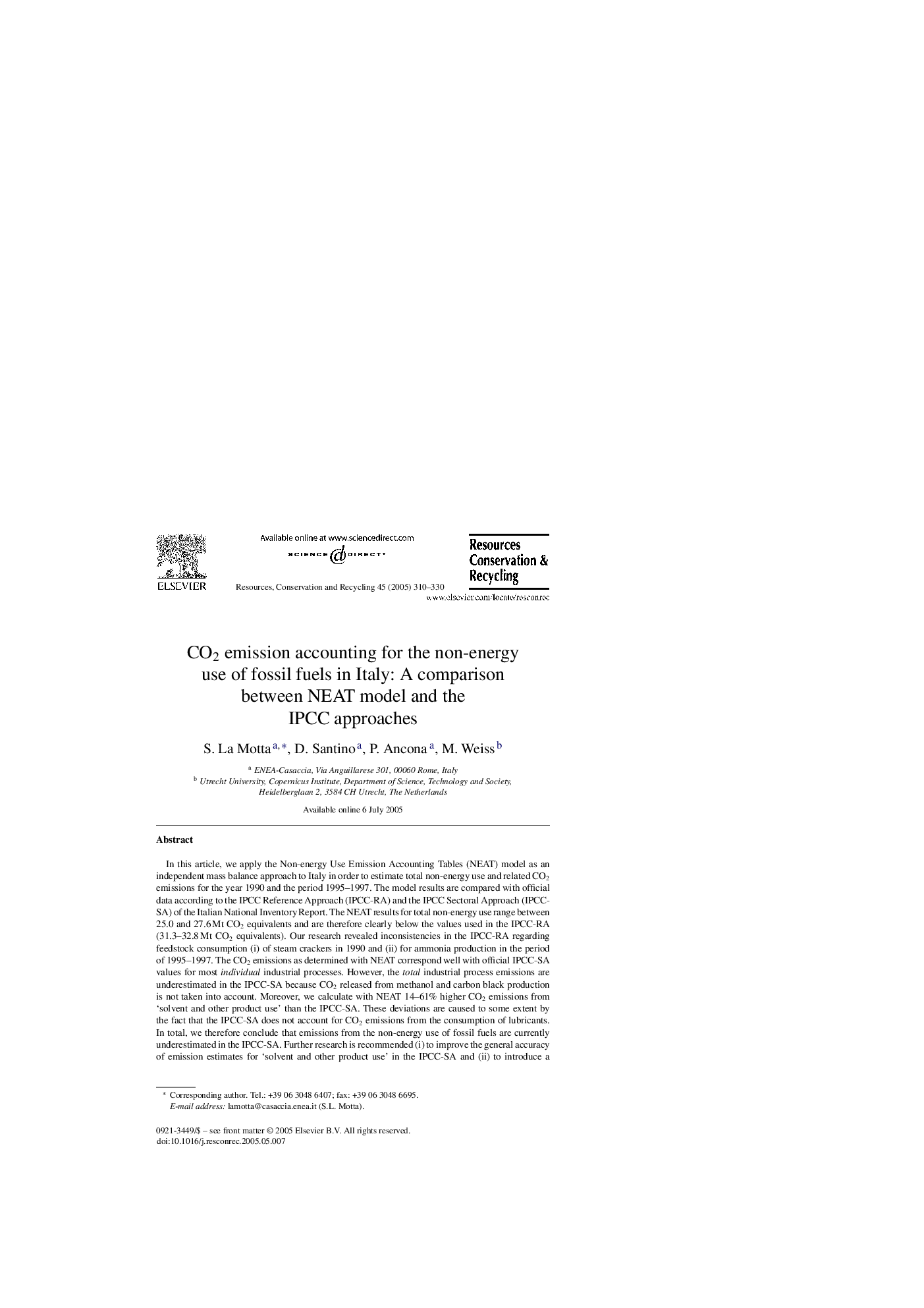| Article ID | Journal | Published Year | Pages | File Type |
|---|---|---|---|---|
| 10508085 | Resources, Conservation and Recycling | 2005 | 21 Pages |
Abstract
In this article, we apply the Non-energy Use Emission Accounting Tables (NEAT) model as an independent mass balance approach to Italy in order to estimate total non-energy use and related CO2 emissions for the year 1990 and the period 1995-1997. The model results are compared with official data according to the IPCC Reference Approach (IPCC-RA) and the IPCC Sectoral Approach (IPCC-SA) of the Italian National Inventory Report. The NEAT results for total non-energy use range between 25.0 and 27.6Â Mt CO2 equivalents and are therefore clearly below the values used in the IPCC-RA (31.3-32.8Â Mt CO2 equivalents). Our research revealed inconsistencies in the IPCC-RA regarding feedstock consumption (i) of steam crackers in 1990 and (ii) for ammonia production in the period of 1995-1997. The CO2 emissions as determined with NEAT correspond well with official IPCC-SA values for most individual industrial processes. However, the total industrial process emissions are underestimated in the IPCC-SA because CO2 released from methanol and carbon black production is not taken into account. Moreover, we calculate with NEAT 14-61% higher CO2 emissions from 'solvent and other product use' than the IPCC-SA. These deviations are caused to some extent by the fact that the IPCC-SA does not account for CO2 emissions from the consumption of lubricants. In total, we therefore conclude that emissions from the non-energy use of fossil fuels are currently underestimated in the IPCC-SA. Further research is recommended (i) to improve the general accuracy of emission estimates for 'solvent and other product use' in the IPCC-SA and (ii) to introduce a definition for non-energy use, which allocates feedstock consumption consistently to either energy use or non-energy use in the IPCC-SA and the IPCC-RA of the Italian National Inventory Report.
Keywords
Related Topics
Physical Sciences and Engineering
Energy
Renewable Energy, Sustainability and the Environment
Authors
S. La Motta, D. Santino, P. Ancona, M. Weiss,
